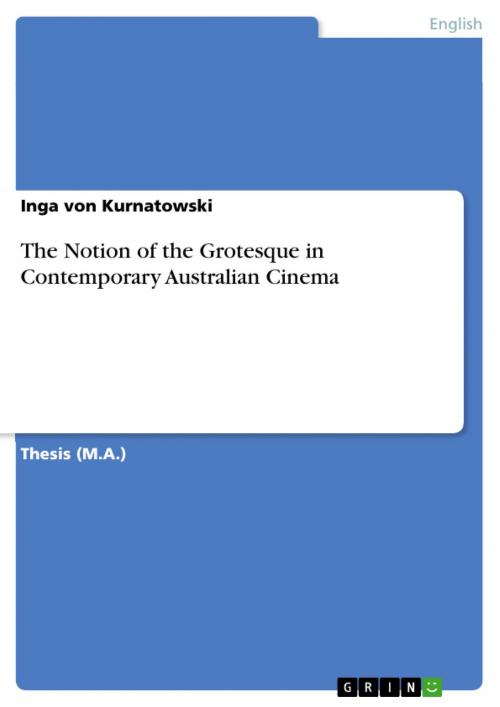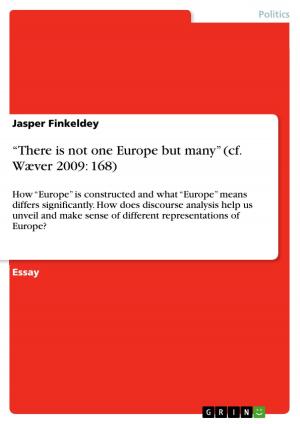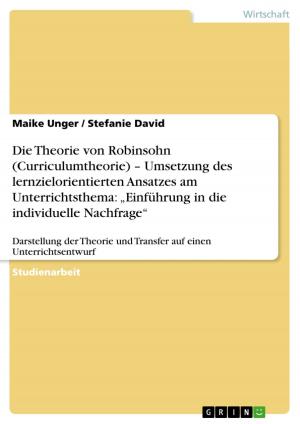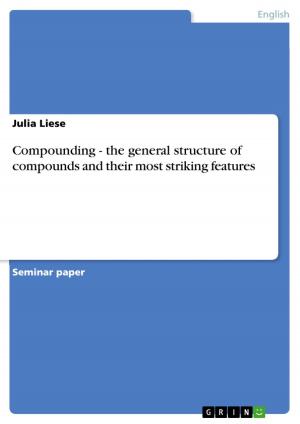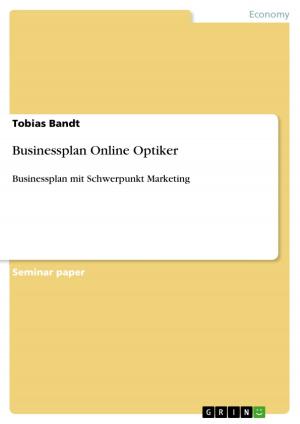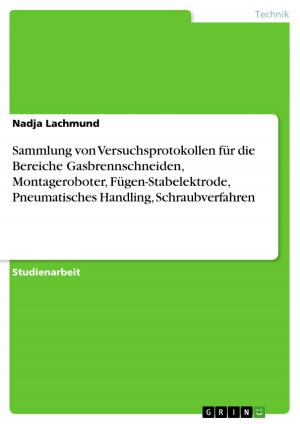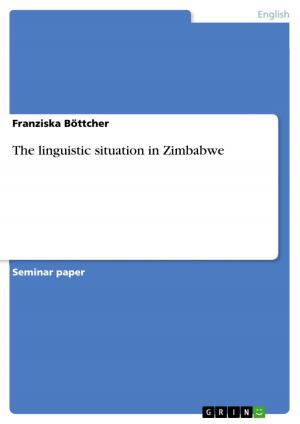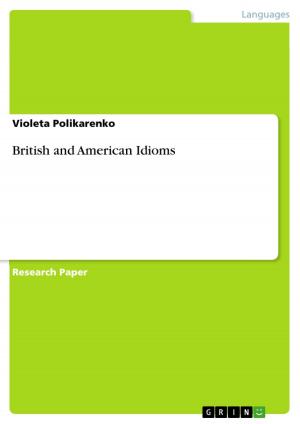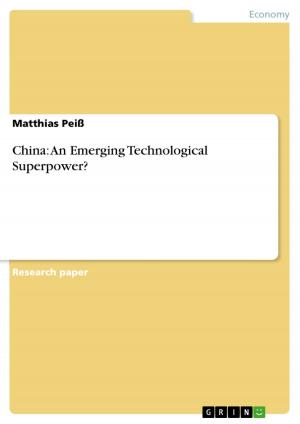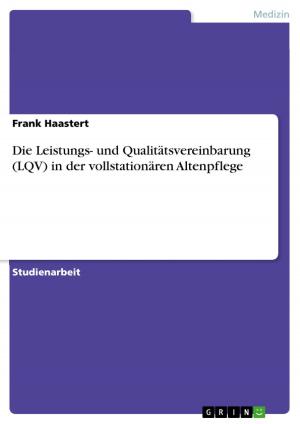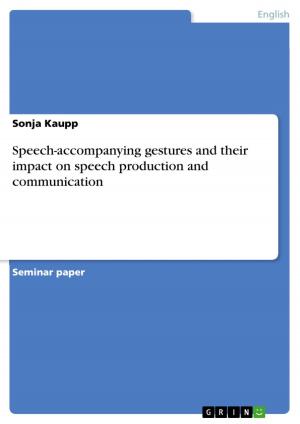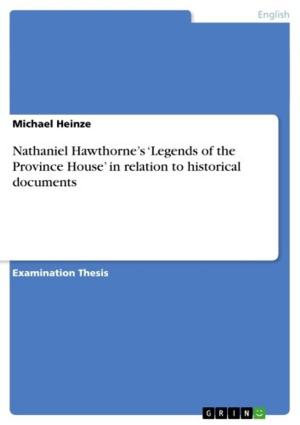The Notion of the Grotesque in Contemporary Australian Cinema
Nonfiction, Reference & Language, Study Aids, ESL, Foreign Languages| Author: | Inga von Kurnatowski | ISBN: | 9783638538336 |
| Publisher: | GRIN Publishing | Publication: | August 25, 2006 |
| Imprint: | GRIN Publishing | Language: | English |
| Author: | Inga von Kurnatowski |
| ISBN: | 9783638538336 |
| Publisher: | GRIN Publishing |
| Publication: | August 25, 2006 |
| Imprint: | GRIN Publishing |
| Language: | English |
Thesis (M.A.) from the year 2005 in the subject English Language and Literature Studies - Culture and Applied Geography, grade: 1,7, Free University of Berlin (Institut für Englische Philologie), 86 entries in the bibliography, language: English, abstract: Der Begriff 'grotesk' bezieht sich auf die Theorie des Karnival des russischen Akademikers Michail Bachtin, der mittelalterliche Volkskultur und seine Manifestationen in Literatur und Gesellschaft untersuchte. In seiner Studie Rabelais and His World (1968) argumentiert Bachtin, dass die Befreiung 'from conventions and established truths'(Bachtin, in Danow, 1995, 34) während des sozialen Ereignisses des Karnival in einer Inversion der sozialen Strukturen und hegemonischen Kodes resultiert, womit eine Kritik an der existierenden sozialen Ordnung ausgedrückt wird. Diese Theorie des Grotesken ist in der Literatur- und Filmwissenschaft zur Anwendung gekommen, da es dominante Repräsentationen von sozialen, politischen und gesellschaftlichen Sturkturen umkehrt und unterminiert. Innerhalb eines australischen Kontextes argumentiere ich, dass Filme wie Sweetie (Jane Campion, 1989), Muriel's Wedding (P.J. Hogan, 1994), The Adventures of Priscilla - Queen of the Desert (Stephen Elliott, 1994), Metal Skin (Geoffrey Wright, 1995), Chopper (Andrew Domenik, 1999) oder The Castle (Robert Sitch, 1997) typisch australische Filme sind, da sie das Element des Grotesken als einen definierenden 'aesthetic and thematic trend' (Rayner, 2000, 21) verwenden und sich so von den konventionellen Normen Hollywoods absetzen. Die Figur des Grotesken ist also nicht nur ein visuelles und narratives Stilelement, sondern auch ein dominantes und definierendes Merkmal in der australischen Filmlandschaft. Die Identifikation des Grotesken als gemeinsames Merkmal populärer australischer Langfilme kann weiterführend als Beitrag zur Diskussion über ein Australian National Cinema und seine identitätsstiftende Wirkung verwendet werden.
Thesis (M.A.) from the year 2005 in the subject English Language and Literature Studies - Culture and Applied Geography, grade: 1,7, Free University of Berlin (Institut für Englische Philologie), 86 entries in the bibliography, language: English, abstract: Der Begriff 'grotesk' bezieht sich auf die Theorie des Karnival des russischen Akademikers Michail Bachtin, der mittelalterliche Volkskultur und seine Manifestationen in Literatur und Gesellschaft untersuchte. In seiner Studie Rabelais and His World (1968) argumentiert Bachtin, dass die Befreiung 'from conventions and established truths'(Bachtin, in Danow, 1995, 34) während des sozialen Ereignisses des Karnival in einer Inversion der sozialen Strukturen und hegemonischen Kodes resultiert, womit eine Kritik an der existierenden sozialen Ordnung ausgedrückt wird. Diese Theorie des Grotesken ist in der Literatur- und Filmwissenschaft zur Anwendung gekommen, da es dominante Repräsentationen von sozialen, politischen und gesellschaftlichen Sturkturen umkehrt und unterminiert. Innerhalb eines australischen Kontextes argumentiere ich, dass Filme wie Sweetie (Jane Campion, 1989), Muriel's Wedding (P.J. Hogan, 1994), The Adventures of Priscilla - Queen of the Desert (Stephen Elliott, 1994), Metal Skin (Geoffrey Wright, 1995), Chopper (Andrew Domenik, 1999) oder The Castle (Robert Sitch, 1997) typisch australische Filme sind, da sie das Element des Grotesken als einen definierenden 'aesthetic and thematic trend' (Rayner, 2000, 21) verwenden und sich so von den konventionellen Normen Hollywoods absetzen. Die Figur des Grotesken ist also nicht nur ein visuelles und narratives Stilelement, sondern auch ein dominantes und definierendes Merkmal in der australischen Filmlandschaft. Die Identifikation des Grotesken als gemeinsames Merkmal populärer australischer Langfilme kann weiterführend als Beitrag zur Diskussion über ein Australian National Cinema und seine identitätsstiftende Wirkung verwendet werden.
